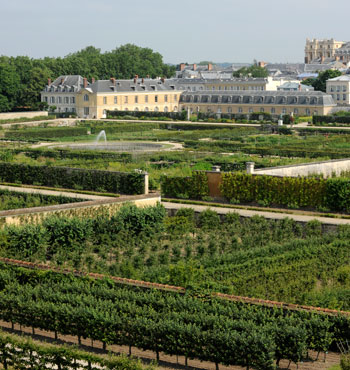On another of my blogs, Brightmeadow on Bicycles, I am writing about my latest goal of planning and executing bicycle rides through the cities in Ohio that are named after European cities. The Grand Tour, if you will. In the 1600's and 1700's, wealthy young men, and some young ladies, were encouraged to complete a year or two travelling through the different capitals of Europe. If you have a mindset more like my husband's, you may also be familiar with the British TV show, The Grand Tour, where three journalists take trips to various globale locales to drive cars (and sometimes wreck them) through tortuous terrain. My journeys will not involve the wrecking of any bicycles.
My most recent bicycle Grand Tour trip was to Versailles, Ohio. I researched the city of Versailles, France, for contrast. Versailles is a suburb of Paris, and has much of the same cachet. Versailles was the site of the French Court during the reign of the monarchs Louis XIV through Louis XVI. And it was also the birthplace of the French Revolution.
One of the monuments of the French Palace of Versailles, a UNESCO World Heritage site, was the King's Vegetable Garden, "Le potager-du-roi" in French. It was opened to the public for tours in 1991. It's gardeners perpetuate the art of pruning and cultivate a wide variety of fruits and vegetables in a French garden.
"Louis XIV commissioned Jean-Baptiste de La Quintinie to develop a kitchen garden on the site of a swamp known as 'stinking pond'. Construction lasted from 1678 to 1683 and it had to demonstrate ingenuity to overcome the swampy terrain. This explains the use of an underground aqueduct, rubble drains and raised beds. Over time, the kitchen garden has pretty much retained La Quintinie's original design – so you will still find a succession of gardens surrounded by walls and dominated by terraces" - Versailles Tourism site
 "The soil was bad but luckily, there were plenty of horses in the King’s stables to provide tons of manure. The open land didn’t provide enough protection to heat loving fruit and vegetables. So, La Quintinie designed the garden as a series of large rooms. He dug down, improved the soil and separated areas with high stone walls and terraces to trap the sun and keep the heat in. It was innovative and exciting gardening and enabled him to grow plants that usually only thrive in the far south.
"The soil was bad but luckily, there were plenty of horses in the King’s stables to provide tons of manure. The open land didn’t provide enough protection to heat loving fruit and vegetables. So, La Quintinie designed the garden as a series of large rooms. He dug down, improved the soil and separated areas with high stone walls and terraces to trap the sun and keep the heat in. It was innovative and exciting gardening and enabled him to grow plants that usually only thrive in the far south.
It was said he could provide up to 4000 figs and 150 melons a day. Lettuces were grown in January. Strawberries were ripe in March. Coffee beans and bananas were grown, as by 1685 glass making techniques meant greenhouse conditions could be created. The underground heating kept roots healthy even in the dead of winter. Louis would show off the area to foreign visitors, it became one of the most famous gardens of its time. " from the website The Good Life France.
A fellow blogger, Jill Colonna of Mad About Macarons and Teatime in Paris wrote about her experience there. It inspired her to make a red onion Chevre Tartin. The link to her recipe on that page is no longer working, but I found her recipe elsewhere on her blog. I do not have prepared puff pastry dough on hand, but I do have flour and butter and lard. I have previously and successfully used this recipe from Penelope Casas for puff pastry, and I have some fresh black walnut meats from trees in our yard that I painstakingly picked out earlier today. I will serve with pears from our orchard.
At the moment I have two dozen or so quart canning jars in the dishwasher. Ed was able to source some jar lids from China for me. I am still waiting for the ones I ordered from Lehman's hardware. I will be canning apples picked last week in Michigan as soon as the cycle is finished.





No comments:
Post a Comment